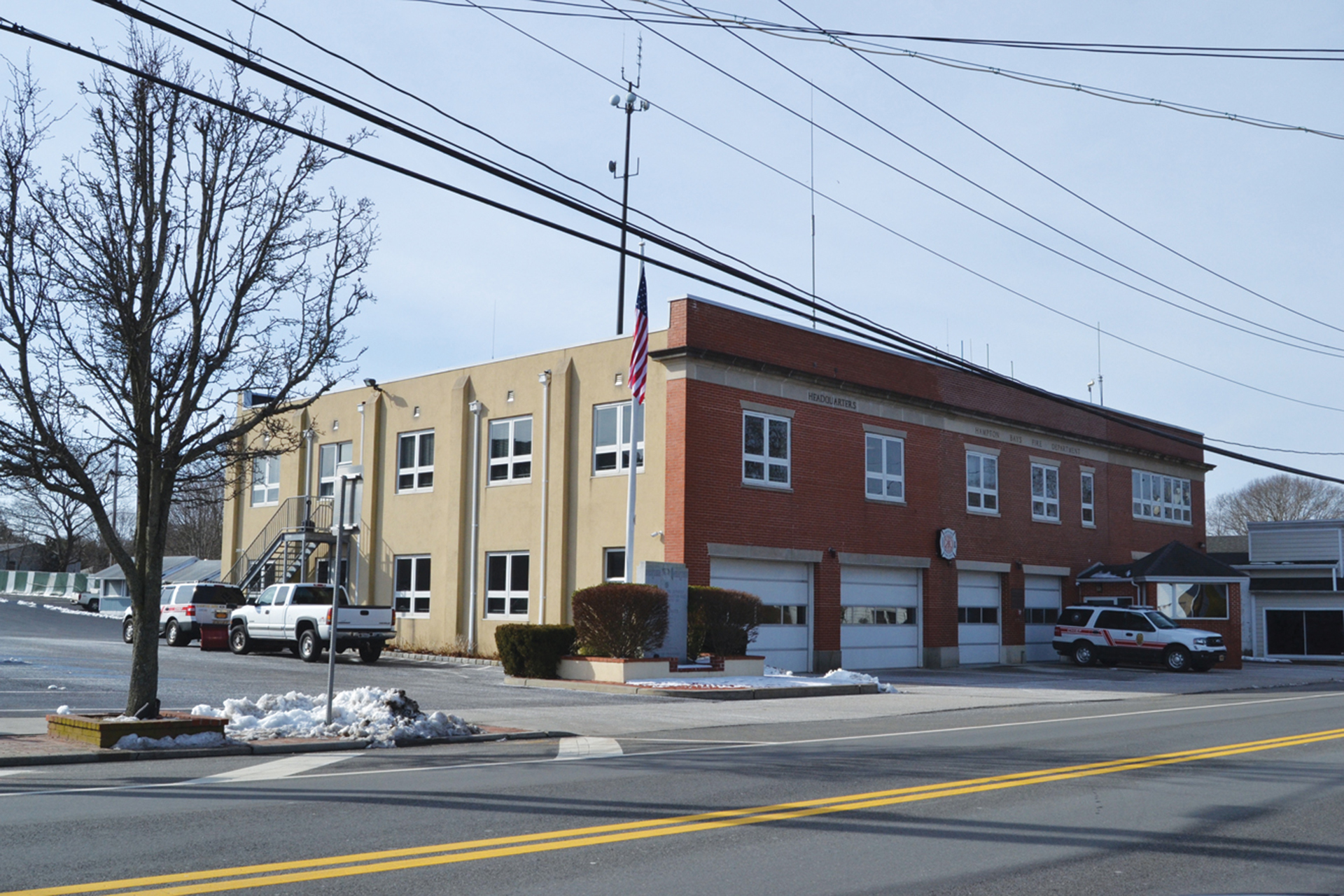Superfund Status For Firehouse

Though it’s generally conceded perfluorooctanesulfonic acid and perfluorooctanoic acid contamination found in a half-dozen communities in Suffolk is related to the firefighting foam used on those sites at one time or another, there is doubt in some quarters, and Hampton Bays is one.
The state Department of Environmental Conservation has a more singular objective: clean it all up. The blame, ultimately, will be decided in courtrooms, perhaps decades from now.
The Hampton Bays Fire Department was added to the state’s registry of Superfund sites — any land in the state that has been contaminated by hazardous waste and poses risks to human health or the environment — on Wednesday, February 27, according to the DEC.
The DEC became interested in the Montauk Highway site after routine testing of three drinking water wells, used by the hamlet’s municipal water system, found traces of two hazardous chemicals in 2014. The Hampton Bays Fire District’s investigation of the two-acre site will include testing soil and groundwater samples to identify the source and extent of the contamination. The DEC, as well as the state’s Department of Health, will oversee the investigation.
The Hampton Bays Water District shut off three of the district’s 11 wells — located along Ponquogue Avenue, between 100 and 150 yards from the fire department’s main firehouse — in 2016 and 2017.
PFOS levels of up to 2400 ppt were found. The site was then identified as a “Class 2 site,” in the State Registry of Inactive Hazardous Waste Sites, which, according to the press release, “presents a significant threat to public health and the environment.”
The Environmental Protection Agency states that exposure to the compounds may cause testicular and kidney cancers, thyroid diseases, and developmental effects to fetuses and infants.
The DEC suggested this week that the contamination likely will be traced back to firefighting foam used during training exercises at the firehouse. In January 2018, fire suppression foam was found within the fire department’s maintenance building and was collected for disposal through a state-funded program. To date, the DEC has disposed of nearly 32,000 gallons of the foam statewide, according to officials.
However, Hampton Bays fire officials have been adamant the chemicals were never used on site. Next up is a joint investigation and a “feasibility study” of what it would take to remediate the
effects of the contamination.
The Hampton Bays Fire District will be responsible for all costs associated with the remediation.
The DEC said that the fire district has submitted a work plan to perform the comprehensive study and expects the remedial investigation to begin this month.
rmurphy@indyeastend.com



